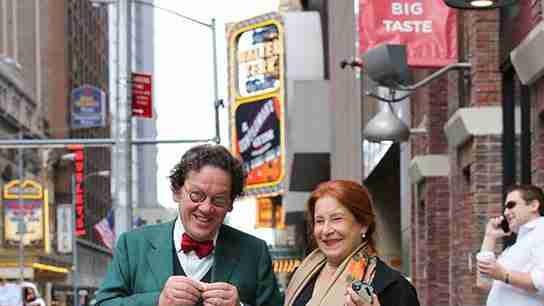During our regular browsing of Humans of New York this week, we at AD were excited to spot a couple in the Theater District asserting the architect’s ability to alter the life of a city’s residents. “We’re all victims of the architect,” they say. “Architecture is the only art that you can’t help but feel. You can avoid paintings, you can avoid music, and you can even avoid history. But good luck getting away from architecture.”

In a way, they’re right. You can’t get away from architecture, in that the construction of your apartment building can inform your mood every morning or whether you actually feel relief when you drop your keys on the front table after a long day. And much of the perceived difference between the personalities of a city’s neighborhoods comes down to aesthetics. The old townhomes and narrow streets of Manhattan’s East Village once seemed the perfect hot spot for New York’s more bohemian residents, while, many blocks uptown, the severity of midtown’s sleek skyscrapers is echoed in the silk ties and crisp navy suits worn en masse by those who commute there daily.
But we have to respectfully disagree with the couple on Humans of New York that, unlike the inescapability of architecture, “you can even avoid history.” Indeed, architects are historians insofar as the most cutting-edge structures still reference great work that’s come before. Zaha Hadid’s recently completed addition to the American University of Beirut campus may be innovative in its small footprint and oddly angular façade, but the stark concrete edifice is a contemporary gesture toward the Brutalism of decades past. And while the new Steven Holl–designed building at the Glasgow School of Art is decidedly more soaring and airy than the century-old buildings around it, its modern structure serves to highlight the university’s storied past. We may be “victims of the architect,” but the architect is the devotee of history.
